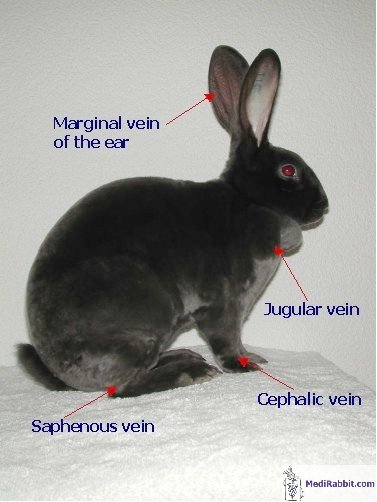I was recently coming from the farm trip and the thing I enjoyed while working is blood sampling. Honestly, bleeding program is the most exciting activity for me; to see the blood oozing out from vein to the tube and you can't help the satisfied feeling because you have done it. However, I have only learn to do venipuncture to animals such as sheep, goat and cattle. I have not put a try on other animals (it'll be pleasure to practice) and here's some information about blood sampling technique in animals.
**********************************
Equipments
1. Needle
Needle size : The smaller the number, the bigger the lumen
Needle and needle sheath
2. Holder
Holder: To direct the blood from the needle to the vacutainer
3. Vacutainer tube
Containers containing coagulant (commonly used in veterinary medicine)
- Red top: Contain clot activator and gel for serum seperation
- Orange top: Contain thrombin (a rapid clot activator) for STAT serum testing
Containers containing anticoagulant (Commonly used in veterinary medicine)
- Green top: Contain sodium heparin or lithium heparin for plasma determination
- Purple top: Contain ethylenediaminetetraacetic acid (EDTA) strong anticoagulant used for full blood count and blood films.
Where to take the blood??
1.Sheep and goat: Jugular vein


2. Cattle: Coccygeal vein and jugular vein
Coccygeal vein
Jugular vein
3. Pigs: External jugular vein and marginal ear vein
Jugular vein

Marginal ear vein
4. Horse: Jugular vein
5. Cats: Jugular vein and medial saphenous vein


Jugular vein


Saphenous vein
6. Dog: Jugular vein and cephalic vein
Jugular vein
Cephalic vein
7. Poultry: Wing vein
Wing vein bleeding
8. Elephant: auricular (ear) vein, cephalic vein, saphenous vein

Saphenous vein
Auricular vein
9. Rabbit, rat or mice : Marginal ear vein, jugular vein, cephalic vein, saphenous vein

10. Iguana (or some cold-blooded animal) : Ventral tail vein
Ps: When time comes, I'll post the blood sampling procedure




















5 comments:
Hi
I am a vet originally from Burma, currently living in U.S. By reading your blog, I can tell that you are inspired, dedicated and determined to be a vet, and I can see that you can make a good veterinarian. I am impressed by the photos and techniques in your posting about venepuncture. Keep up the good work and welcome to the world of deedicated vets. BTW, one of the professors from my vet med school is the wellknown expert in wildlife, specialised in wild asian bredding projects.
Andy Aung Oo
In my previous comment, I meant wild asian elephant breeding project.
Thanks
hi s Dr Hafidz vets dari UiTM. awak ni masih belajar di umk ker dah kerja. I just pass through perasan your blog. Keep good work. Ada masa masuk my blog www.kucingneko.blogspot.com
Jugular vein and medial saphenous vein http://dakhoaaua.vn/dot-laser-mun-coc-co-dau-khong-1729.html
Những thông tin hay về các bệnh đa khoa có tại phòng khám đa khoa tốt nhất quận 6
Thanks for the article .
I also have something very interesting you can watch it at Tại Đây
Post a Comment